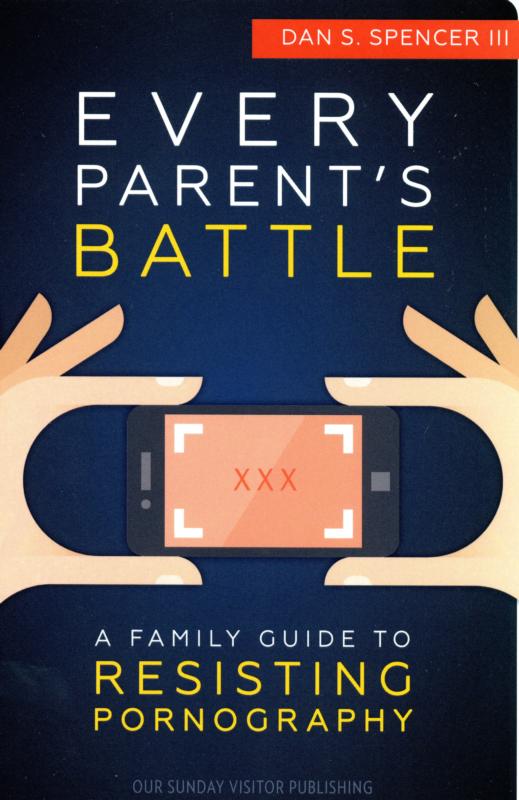 “Every Parent’s Battle: A Family Guide to Resisting Pornography”
“Every Parent’s Battle: A Family Guide to Resisting Pornography”
by Dan S. Spencer III.
Our Sunday Visitor Publishing (Huntington, Indiana, 2017).
175 pp., $14.95.
Children today are exposed to pornography at an early age, and are able to see it effortlessly on every device connected to the internet. Once a problem that was generally ignored, porn has become such a risk that parents must now take aggressive steps to protect their children from it. That is the message behind Dan S. Spencer’s informative and helpful new book, “Every Parent’s Battle: A Family Guide to Resisting Pornography.”
While the focus of Spencer’s work is to tell parents what they can do to protect their children against the evils of pornography — which he does well — he also provides an insightful parenting guide for creating a healthy and wholesome family life, although he doesn’t make that claim himself. The steps Spencer offers about protecting children from porn are spot-on; the advice he offers about how to be a great parent may be even more valuable.
[hotblock]
In the 28 pages of the first section, Spencer provides basic information concerning the porn industry, how it affects our brains and how it shapes our attitudes about healthy sexual behavior, especially the degrading of women and girls and introduces the concept that parents can and must do everything they can to protect their children from it.
In the second section, Spencer offers six strategies parents can use in their fight against porn. This section is the core of the book and provides the guidance on being a great parent. His recommendations to parents that they should show affection through words and physical touch, that they need to establish boundaries and enforce them and that they should speak with their children from the youngest ages to establish communication networks that will be used throughout life are excellent.
Chapter 7 on internet and digital safety provides simple steps parents can take to keep porn out of their home. Each of these six chapters ends with personal reflection and discussion questions, along with action steps which are very helpful.
The final section offers one brief chapter that provides a checklist based upon the ages of children of things parents can do related to mentoring, modeling, and the use of technology. These are valuable ideas. More would have been appreciated. Of the five appendices, the resources are of the most value, although limited in scope.
There are small problems with the book that raise some concerns. For example, in the foreword Peter Kleponis writes that most children are fully exposed to porn by the age of 8, yet Spencer uses the age of 11 and highlights it several times throughout the book. Which is it and what difference does it make?
Spencer never mentions the U.S. Conference of Catholic Bishops’ Charter for the Protection of Children and Youth or the child safety training that takes place in every Catholic parish and school, although he does offer specific ideas that parents can use to teach their children about protecting themselves from sexual abuse. This idea needed additional development.
Finally, after specifically and correctly thanking Archbishop Gregory Aymond on page 172, the archbishop is named as “Daniel Amen” in a note on page 175. Errors and omissions such as these can raise doubts regarding other data and statements, which is unfortunate.
As Spencer makes clear, porn sells. The perniciousness of porn and Spencer’s advice for protecting and parenting our children provide ample reasons to buy this book.
***
Mulhall speaks and writes on the topic of creating healthy, wholesome and holy families from his home in Louisville, Kentucky.
PREVIOUS: Roll up! Roll up for the magical ‘Mystery Journey’!
NEXT: ‘The Post’ paints portrait of courage in a bygone newspaper era



Share this story